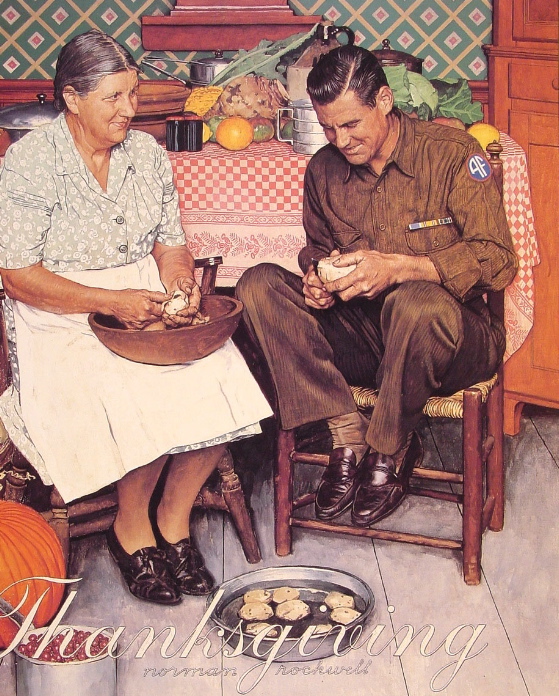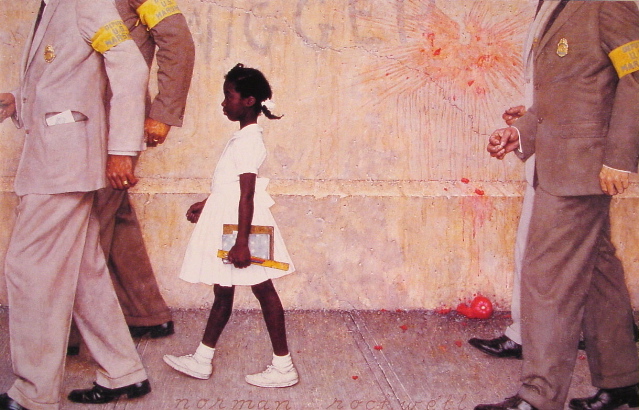Norman Rockwell was not the least of the Victorian academic painters, even
though he lived in the 20th-Century. He perfected the
photo-authoritative aesthetic of the late Victorians and used it for
complex narrative purposes. The official Victorian academy was
swept away as a fountainhead of popular art by the invention of movies,
but Rockwell competed with movies directly and survived. Indeed,
he triumphed. His images seem like stills from imaginary
movies — movies more wonderful and moving and entertaining than even
Hollywood could turn out.

I can’t imagine that any filmmaker from Hollywood’s so-called golden age, the studio era, wasn’t influenced on some level by Rockwell’s art. Steven Spielberg, a
connoisseur and student of that golden age, has an original Rockwell
hanging behind the desk in his office.
Many modernist painters will admit to admiring Rockwell, but the
20th-Century art establishment in general marginalized and even stigmatized his work for the crime of being popular in the mainstream
culture — not just noticed and known but intensely loved — and
for embracing a tradition linked to the achievement of the discredited
Victorians.
Anyone with eyes can see what nonsense that was.

